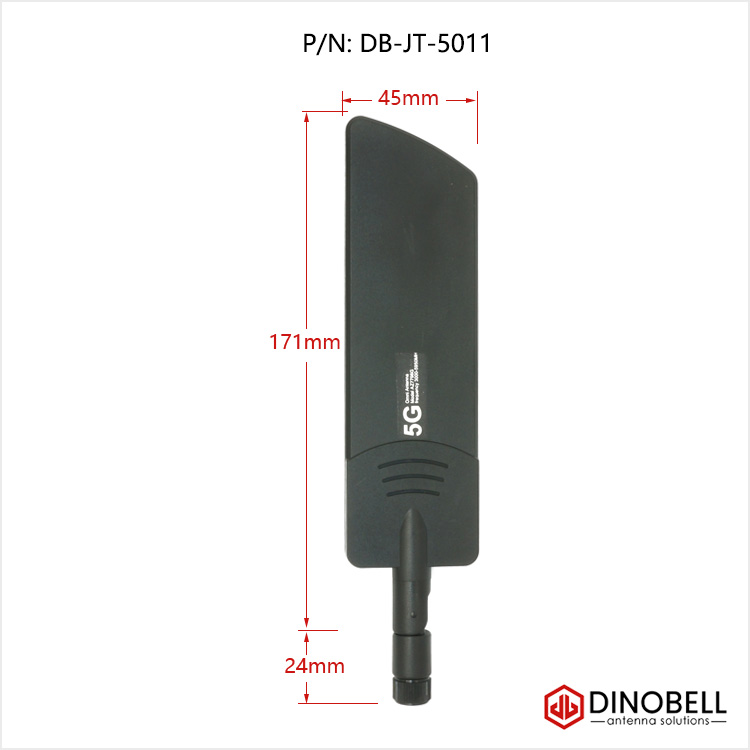Type: 5G Antenna SMA Terminal DB-JT-5011 5G 4G cellular equipment and network
| Part Number: |
DB-JT-5011 |
| Freq Range: |
700-960/1710-2700/3300-5000/5150-5950MHz |
| Center Freq: |
/ |
| Gain: |
3 dBi |
| VSWR: |
<2.0 |
| Impedance: |
50 Ohm |
| Polarization: |
Vertical |
| Radiation Pattern: |
Omni-Directional |
| Max. Input Power: |
25 W |
| Antenna Dimensions: |
H195mm*W45mm |
| Mounting Method: |
SMA Terminal Mount |
| Connector Type: |
SMA-male, RP-SMA-male optional |
Introduce of 5G Technology 2
5G technology will introduce advances throughout network architecture. 5G New Radio, the global standard for a more capable 5G wireless air interface, will cover spectrums not used in 4G. New antennas will incorporate technology known as massive MIMO (multiple input, multiple output), which enables multiple transmitters and receivers to transfer more data at the same time. But 5G technology is not limited to the new radio spectrum. It is designed to support a converged, heterogeneous network combining licensed and unlicensed wireless technologies. This will add bandwidth available for users.
5G architectures will be software-defined platforms, in which networking functionality is managed through software rather than hardware. Advancements in virtualization, cloud-based technologies, and IT and business process automation enable 5G architecture to be agile and flexible and to provide anytime, anywhere user access. 5G networks can create software-defined subnetwork constructs known as network slices. These slices enable network administrators to dictate network functionality based on users and devices.
5G also enhances digital experiences through machine-learning (ML)-enabled automation. Demand for response times within fractions of a second (such as those for self-driving cars) require 5G networks to enlist automation with ML and, eventually, deep learning and artificial intelligence (AI). Automated provisioning and proactive management of traffic and services will reduce infrastructure cost and enhance the connected experience.





